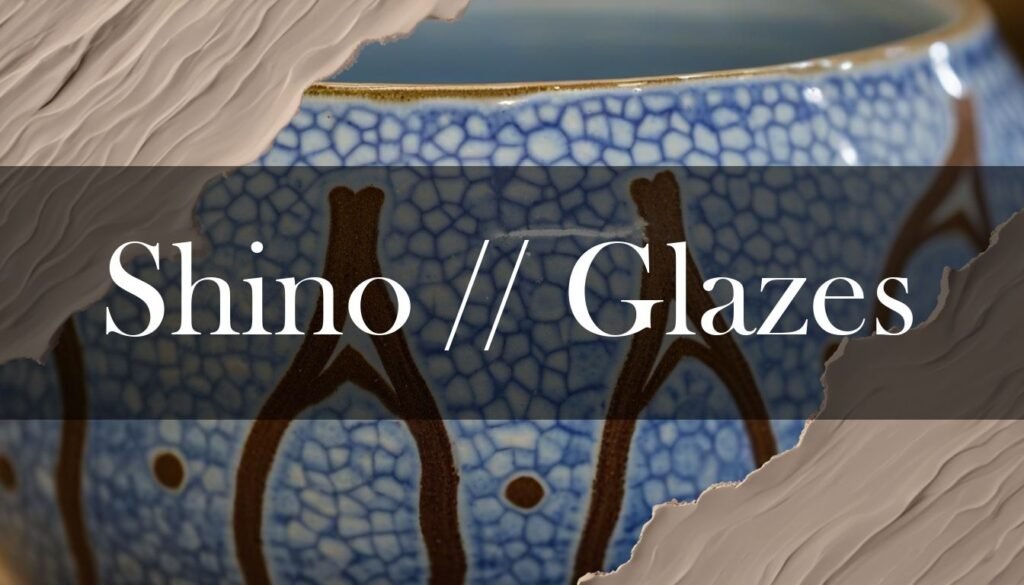Shino glazes, born in the Mino province of Japan during the Momoyama period, offer a captivating range of possibilities for ceramic artists. These glazes, known for their distinctive textures and colors, can range from a milky, ethereal white to warm oranges and deep reds. The magic of Shino lies in understanding its fundamental ingredients and how they interact during the firing process. The basic recipe for Shino typically includes feldspar as the primary flux, often combined with local clay. But modern variations incorporate a variety of ingredients to achieve unique effects. Clays such as kaolin and ball clay contribute to the glaze’s texture and help it adhere to the pottery. Soda ash is frequently added to influence color development and promote carbon trapping, which creates those beautiful gray spots or patches we often see on the surface. Other ingredients like spodumene and nepheline syenite can act as fluxes, impacting the glaze’s melting behavior and color. And for those warm hues, some recipes include Redart clay. Even small additions like bentonite, silica, cryolite, and Veegum T can fine-tune the glaze’s suspension, surface texture, and application properties. The beauty of Shino is that the specific proportions of these ingredients can be adjusted, allowing potters to explore a vast landscape of visual and tactile effects.
Achieving the characteristic Shino look requires careful attention to the firing process. Traditional Shino glazes are generally fired between cone 9 and cone 10, a range of approximately 2345°F to 2381°F (1285°C to 1305°C). This high-temperature range allows the glaze to mature, developing the textures and colors we associate with Shino ware. However, some contemporary Shino glazes are designed for lower firing temperatures, such as cone 5 (around 2167°F or 1186°C). The key to unlocking Shino’s potential lies in controlling both the firing temperature and the kiln atmosphere. For example, carbon trapping, which creates those distinctive gray or black patterns, requires heavy reduction early in the firing process, typically around 1560°F (849°C), and maintaining it until the glaze melts. The “orange peel” texture, a slightly rough and dimpled surface, can be enhanced by a slow cooling process after reaching peak temperature. You can read more about firing temperatures in this article. And for more information about reduction firing, read Oxidation vs Reduction Firing: The Potter’s Choice.
This video from Pottery Crafters answers 21 common questions about glaze for beginners. It’s a great resource for anyone starting out with pottery:
“The key to unlocking Shino’s potential lies in controlling both the firing temperature and the kiln atmosphere.”
Working with Shino glazes isn’t always smooth sailing; potters may encounter challenges like crawling, pinholing, or glaze runs. Crawling, where the glaze retracts during firing, can be caused by applying the glaze too thickly, contaminating the bisque ware, or imbalances in the glaze composition. Pinholing, those tiny holes in the glaze surface, often results from gases escaping during firing, which can be minimized by using clay bodies with fewer organic impurities, applying thinner glaze layers, and slowing down the firing cycle. Glaze runs, where the glaze becomes too fluid, can be prevented by ensuring a balanced glaze formula, applying the glaze in moderate thickness, and using a controlled firing schedule. Understanding these potential pitfalls and how to address them is crucial for consistently achieving beautiful Shino surfaces. Read more about why glazes sometimes crawl, and what to do about glaze crawling. You can also find more information about what causes pinholes in pottery glaze, and tips on glaze pinholing and pitting.
The clay body you choose also plays a significant role in the final appearance of your Shino-glazed pottery. The clay’s iron content, alumina and silica ratios, and porosity all interact with the glaze, influencing its color, texture, and behavior. Low-iron clay bodies, like porcelain and light stoneware, tend to produce lighter, more translucent glazes, aligning with traditional Japanese aesthetics. Clay bodies with moderate to high iron content can yield richer, more vibrant colors, especially when wood-fired. Higher alumina content in the clay can enhance red flashing effects, while higher silica levels may result in more muted tones. Porous clay bodies can absorb glaze differently, affecting its thickness and color, while textured surfaces can create interesting variations in the glaze. Experimenting with custom clay body blends, incorporating materials like Grolleg kaolin, mica, and silica, can further refine the results, allowing you to tailor the clay to your desired Shino effects. You can read more about clay suggestions for Shino glazes, and about flashing claybodies in Shino wood kilns.
Over time, several variations of Shino glaze have emerged, each offering its own unique aesthetic. Plain Shino (Muji Shino) features a simple white feldspar glaze, highlighting the clay body’s natural beauty. E-Shino (Picture Shino) incorporates underpainting with iron oxide, creating intricate designs beneath the glaze.
Nezumi-Shino (Gray Shino) involves coating the pottery with an iron-rich slip before applying the glaze, resulting in a grayish surface with white patterns. Aka-Shino (Red Shino) achieves a red coloration through specific firing conditions, while Beni-Shino (Crimson Shino) showcases vibrant red tones using a special clay.
Neriage-Shino (Marbled Shino) creates a marbled effect by kneading red and white clays together. Modern variations include Carbon Trap Shino, which traps carbon during firing for gray to black speckling, and High Alumina Shino, which produces a whiter, more opaque finish. Commercial Shino glazes, like those offered by Amaco, provide a range of options suitable for various firing conditions, allowing potters to explore matte or glossy surfaces and blendable hues. More information about the story of ceramics, and about Shino Glazes is available online.





